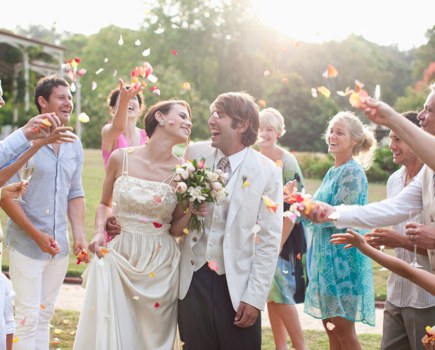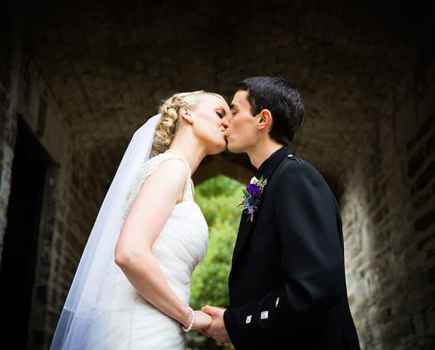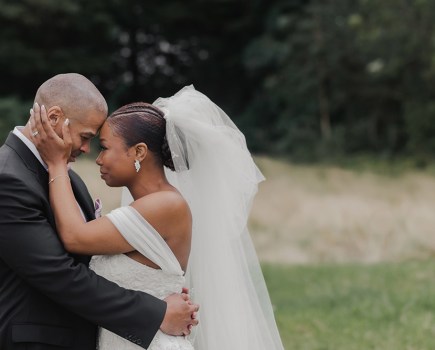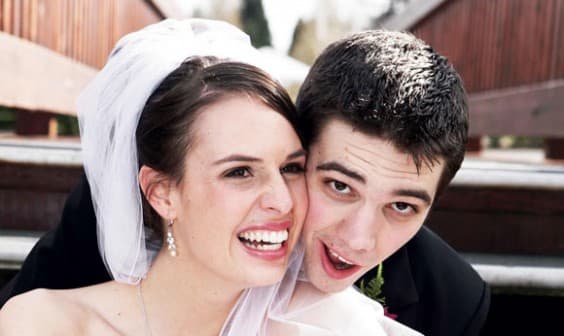
Wedding photography isn’t for everyone. But assuming your technical skills are up to scratch (and if they aren’t, you shouldn’t even consider letting yourself loose on someone’s big day) your problems are mainly about time and crowd management.
Wedding Photography: What equipment you need
Here are a few of the things you’ll need for wedding photography:
Spare SLR body
It’s assumed you’ll be using a digital SLR, but if you’re the official wedding photographer it’s essential to take more than one body, even though you’re unlikely to use it. Otherwise, what if your camera breaks down during the big day?
Few photographers have the luxury of two DSLR bodies, so chances are you’ll have to borrow one from a mate or take an old film SLR body.
Essential extras
Take twice as many media cards as you think you’ll need. Make sure you have at least one spare battery, even if it’s the expensive Li-Ion kind. Battery failure is not an option.
Some photographers take a flash for subtle fill-light, others take a folding reflector (though you’d need an assistant to hold that).
Tripod
Though not essential for most shots (and a real hindrance for candids), a tripod can be useful for some of the posed shots.
This is especially the case for big groups, where you can leave the camera set up and talk to your group directly, rather than barking directions from behind the camera. It’s also handy for posed shots of the bride and groom, as it leaves you free to adjust the bride’s dress etc without moving the camera.
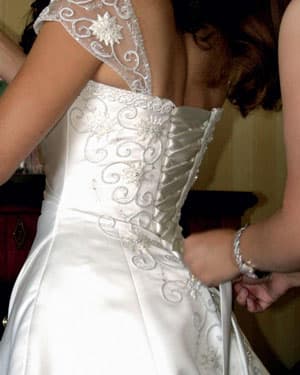 Wedding photography: Forward planning
Wedding photography: Forward planning
Meet the couple in advance to discuss their needs. Make a list of who you need to photograph.
Although the candid reportage approach is fashionable, take some posed shots too, to be sure of securing at least one flattering, in-focus shot of all the key players.
If you can, visit the venues in advance to see where the sun will be, and scout for locations for the posed photos.
Seek places away from direct sun and with undistracting (but not ugly) backgrounds. Make a list of the shots you need to take (exchanging rings, cutting the cake etc).
Find out if there are any restrictions on photography. Check whether pictures are allowed during the service itself, and on any caveats that may apply (such as no flash).
Check your equipment beforehand to ensure that everything is working, batteries are charged and you have spares. Pack a back-up camera, just in case. Check all your settings too.
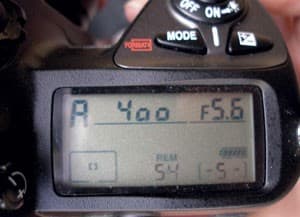 Wedding photography: Camera Settings
Wedding photography: Camera Settings
You’ll need to vary your settings to suit the conditions.
During the ceremony you’ll probably need to raise the ISO to 400 or higher to shoot without flash.
In high-contrast light you’ll need to be careful with white wedding dresses and dark suits, one of which can easily lose detail if your exposure isn’t spot on.
The best insurance is to shoot in RAW format, with its greater latitude. Take a mid-tone light reading and check your LCD regularly. The flashing overexposure warning of many cameras may be helpful but it’s only a guide.
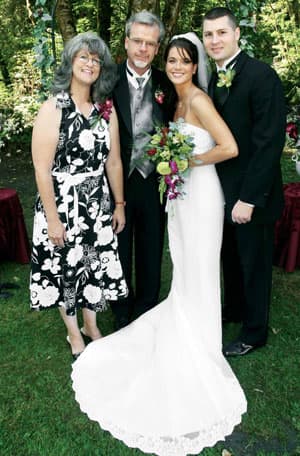 Wedding photography: Be a poser
Wedding photography: Be a poser
A good wedding shoot should be a mix of both posed and candid shots. The posed shots present the best opportunities to make sure everyone looks good in the shots and, for example, the bride’s dress is shown in its full glory.
Don’t keep guests waiting too long while you do them – they’ll soon become irritable.
Shoot a few key groups too, as a record of everyone who was there (it’s easy to miss people using the reportage approach).
Be clear and decisive in your instructions so guests know what’s required. Pose them quickly and don’t faff with the camera.
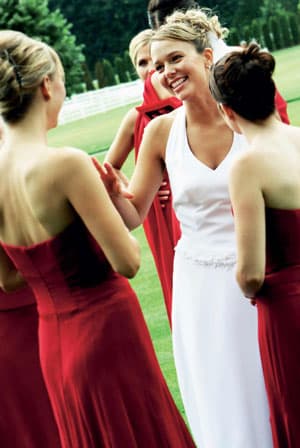 Wedding photography: Candidly speaking
Wedding photography: Candidly speaking
While a few posed shots are important, it’s best to keep them to a minimum and spend more time on semi-posed and unposed candid shots, which are less disruptive to the day and better convey the atmosphere and emotion of the event.
Make sure you record the key events, such as the bride arriving; guests throwing confetti; tossing the bouquet.
Use the wider end of your zoom and get close to create a sense of intimacy. But also try zooming in to telephoto and using a wide aperture to isolate small groups and individuals from the background.
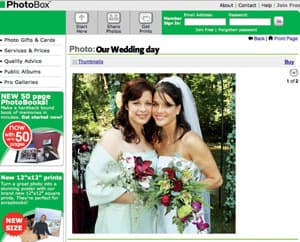 Wedding photography: Photoshop tweaks
Wedding photography: Photoshop tweaks
If you’ve done a good job of shooting you shouldn’t need to spend much time on the PC.
Obviously if you shot them in RAW there will be the standard processing to do: adjusting contrast, colour and so forth.
A few shots may benefit from a tighter crop, or the removal of the odd distracting background element. In some high-contrast shots you may find that a small adjustment of the Highlight/Shadow control (under Image>Adjustments in Photoshop) will increase detail in highlights (eg the bride’s dress) and shadows (dark suits) .
This is the time to edit your shoot. You will have probably taken many dozens of pictures, and there’s no point handing over photos of people blinking and so forth.
Wedding photography: Proudly presents
In days of yore a newly married couple would receive their precious photos mounted in a thick leather album, but nowadays there are many alternatives.
The album is still a great way to present pictures but you can also have them made into a hardback book. If you can display the images on a website or online gallery the guests will probably order some prints too.
Depending on whether this is a commercially motivated venture, you could put them on a site such as Photobox, where guests can order and pay for their own shots, or a simple gallery, where they must order through you. Another option is a DVD slideshow, with music – but only in addition to printed output, not instead of it.




